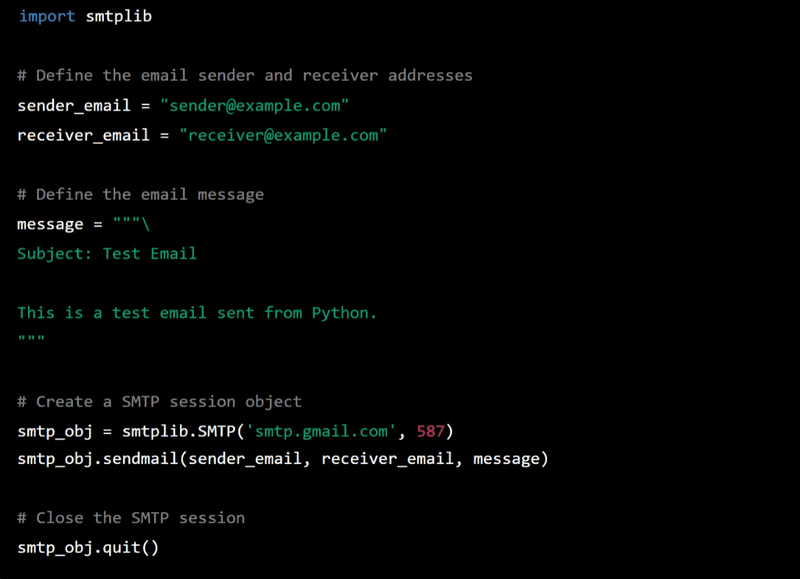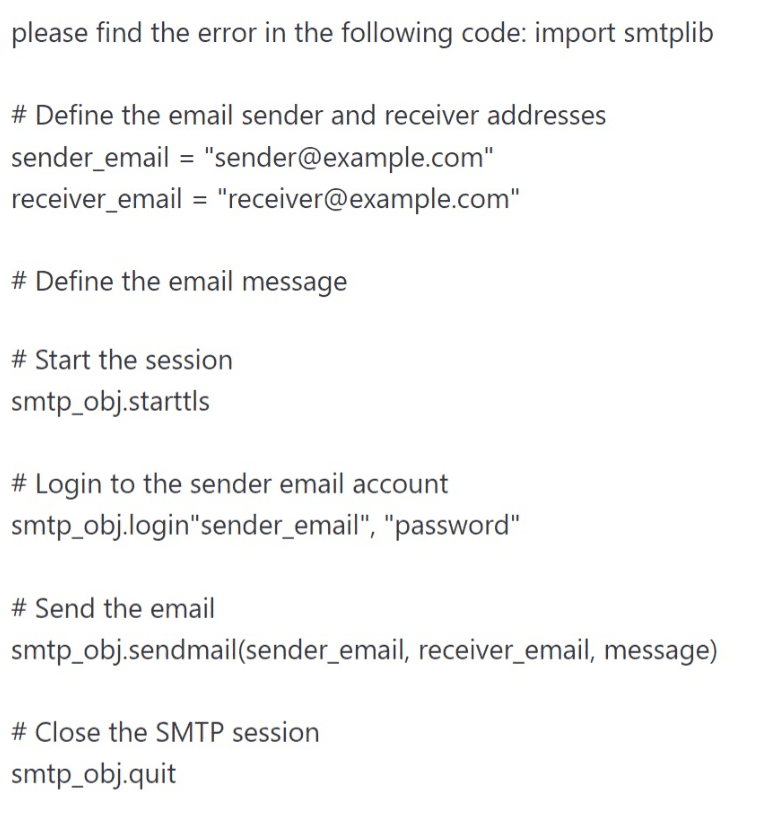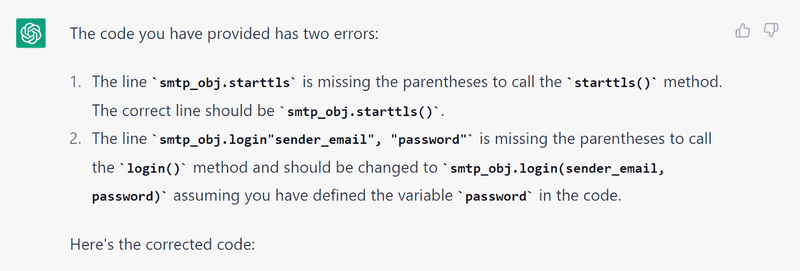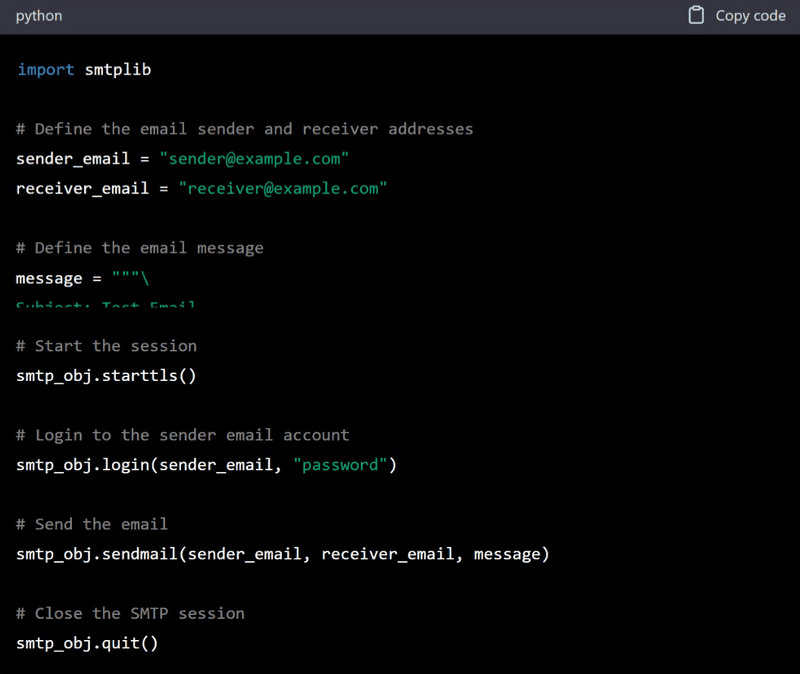ChatGPT for Software Development
ChatGPT for software development has recently begun to acquire popularity and it can be the next big thing in the tech industry. For software developers, ChatGPT can be quite helpful. It can answer queries on a variety of topics, including programming languages, software design patterns, debugging methods, and best practices for software development.
We shall define ChatGPT and discuss its benefits for both present-day and future software specialists in this article.
What is ChatGPT?
ChatGPT is an AI-powered chatbot or conversational agent. It was developed by OpenAI as a big language model, and as such, it has been trained on enormous volumes of text data to comprehend and produce human-like responses to a broad range of themes and inquiries.
ChatGPT processes normal language and produces responses using deep learning methods, particularly transformer neural networks. Science, technology, history, culture, entertainment, and a host of other subjects are all fair game for conversation.
It is made to answer users' questions in a useful and educational manner while still allowing for casual discussion. With some restrictions, it aims to create a smooth, natural language-based communication experience that is comparable to speaking with a human.
ChatGPT - how does it work?
ChatGPT is powered by a deep learning technique called transformer neural network. More specifically, it utilizes the GPT (Generative Pre-trained Transformer) model, which is a variant of this architecture that has undergone pre-training on vast quantities of textual data.
The model is exposed to a wide variety of text data during the pre-training phase, including texts from books, papers, and websites, in order to learn the relationships and patterns between various words and phrases. As a result, the model can acquire a profound comprehension of language and the capacity to produce logical, human-like responses to a variety of inquiries.
The natural language processing (NLP) pipeline of ChatGPT first analyzes the text that a user enters as a query or statement. To do this, the text must be tokenized (divided into individual words and symbols) and encoded into a numerical form that the model can comprehend.
The response that has the highest probability is then chosen and decoded back into a natural language to provide the user with a response.
ChatGPT to replace software developers?
This is the question for many people working in this industry.
Social media fans have been intrigued by the ability of ChatGPT to write sometimes meaningful-sounding (and often sublimely absurd) mini-essays — including small computer programs — on demand. Yet, these cutting-edge AIs are only capable of a small number of jobs, and researchers believe they will never be able to completely replace human programmers.
Limitations of ChatGPT
Wrong answers: ChatGPT is continuously trained to increase the precision of its responses. Yet because this is a brand-new technology, the model has not yet received enough training. As a result, the AI chatbot might give inaccurate information. Because of this, StackOverflow banned ChatGPT, stating that "Posting responses generated by ChatGPT is considered harmful to our site and to users who ask or search for accurate answers" due to the low average rate of correct replies from ChatGPT.
Too formal: ChatGPT's output contains a bias that prevents it from unwinding and behaving naturally. Instead, its reactions are typically formal. Humans, on the other hand, generally answer to enquiries using everyday language and slang in a less official, more casual manner. The lack of humour, analogies, and sarcasm in the answers also makes ChatGPT content appear too professional for some types of content.
It's not very detailed: ChatGPT does not offer brief responses. ChatGPT was trained to reward the program when users were pleased with the response. The human raters tended to favour more thorough responses. Nonetheless, there are other circumstances—like in a medical setting—where a succinct response is preferred to a thorough one. This means that the computer needs to be prompted to be less thorough and more straightforward when such characteristics are relevant.
It's not a Human Expert: How comparable to Human Experts is ChatGPT? Understanding indirect meaning in human communication may occasionally require shifting the conversation's focus. Although ChatGPT uses AI to generate responses, it can sometimes miss the mark by taking things too literally and not considering the original query.
Because ChatGPT employs pre-existing code that is readily available online to give you the best outcome, it won't be able to replace the majority of software engineers. Imagine for a moment that your organization has posted its internal secret codes online. How could chat GPT help with this problem? With its AI technology, ChatGPT undoubtedly outperforms all other search engines, but dealing with issues that only a human software engineer can work promptly and specifically it can never be replaced.
It is crucial to understand that ChatGPT cannot replace the majority of software engineers because it uses pre-existing code from online sources to generate optimal results. Imagine that your organization has shared its confidential internal codes online. ChatGPT cannot address this issue. Although its AI technology outperforms other search engines, it is incapable of handling problems that only a human software engineer can handle promptly and accurately.
How do you see ChatGPT fitting into your company's plans for implementing a particular software release? The answer is that it currently has no place in this process. ChatGPT simply provides access to pre-existing content online, and if this content had the ability to replace human workers, they would have been replaced already.
ChatGPT as a software developer's assistant
While ChatGPT won't replace software developers, it works effectively as a tool to assist programmers in its current version.
Here are five distinct ways using ChatGPT can make your life as a developer simpler:
1. ChatGPT as a research assistant
Almost 45 terabytes of text data from multiple sources, such as CommonCrawl, WebText2, and code written in Python, HTML, JavaScript, and CSS, were used to train ChatGPT.
Based on this extensive training dataset, ChatGPT conveniently creates answers in response to user input. ChatGPT may be a useful research assistant due to its capacity to comprehend human input. Although its results still need to be verified, it can deliver precise responses that can spare us from trawling StackOverflow or search engine results. Even more, explanations may be provided to help developers learn and comprehend new ideas.
This advantage can make it easier for software developers to find fresh information that is pertinent to coding. You will occasionally have questions because no developer is an expert in everything. It can be quite time-efficient to head over to the OpenAI tab and have ChatGPT respond to queries. ChatGPT is a great way to receive an answer quickly, but you shouldn't use it to gather all of your information.
2. Making coding more accessible
Today's engineers can write human-readable code without writing machine code because of high-level programming languages, compilers, and integrated development environments (IDEs) (which are binary and not human-friendly). Similarly to this, the development of AI assistants like Copilot is encouraging evidence that efforts are continuing to be made to make coding more approachable and pleasurable for everyone.
Abstraction can be advantageous, but that doesn't necessarily mean developers are less knowledgeable or skilled. Similar to how using autocomplete doesn't make you a bad engineer, not understanding how a car engine operates doesn't make you a bad driver. High-level languages like Java or machine learning techniques like ChatGPT can still help you create good applications.
3. ChatGPT can generate code
Even skilled software developers can sometimes use a little bit of help when writing code. For this, ChatGPT can provide reliable and correct codes in order to make your job easier.
To test this, we asked the chat to provide us with a code to automate e-mail sending, and the response was the following:
The following is the code provided by ChatGPT, along with an explanation:
As you can see above, the chat took our request and provided exactly what we asked for, in just a matter of seconds.
4. Using ChatGPT for Natural Language Processing
As a subset of machine learning, natural language processing (NLP) employs computer programs to modify and synthesize natural languages, such as the text that appears when you ask ChatGPT a question or the speech you hear from an Alexa or Siri-like AI bot. Natural language processing encompasses a variety of tasks, including language translation, text analysis, speech recognition, and automatic text synthesis.
5. ChatGPT detects errors
ChatGPT can be a real help when it comes to identifying errors in coding. In order to test ChatGPT's ability to detect code errors, we took the entire provided code and removed the parentheses for the following codes: 'smtp_obj.starttls', 'smtp_obj.login"sender_email' and "password", and we asked it to find the errors:
ChatGPT's response was the following:
Next, the chat provided the corrected code:
So, as you can see, ChatGPT is pretty accurate in detecting syntax errors when it comes to coding. This can greatly simplify a software developer's work, but that doesn't mean that the chat should completely replace the work of developers.
ChatGPT for Software Development – Conclusion
Many experts in robotics, AI, and programming acknowledge that the move towards technology is inevitable. However, it's important to remember that AI is not perfect and should be viewed as a tool to assist, rather than a substitute for, human labor. As discussed in this article, software developers can benefit from working alongside ChatGPT as an assistant tool.
MCRO provides quality software development services that guarantee the success of any business. The expert team from MCRO offers cutting-edge digital solutions that will propel your business in the future. We provide end-to-end services and solutions for every stage of your digital transformation.





